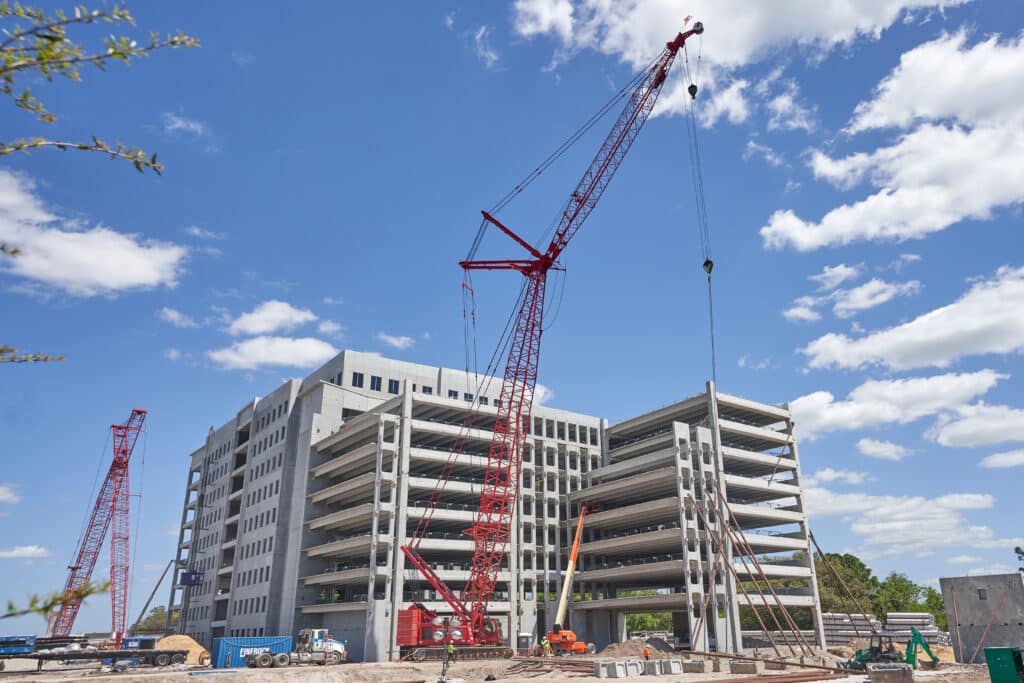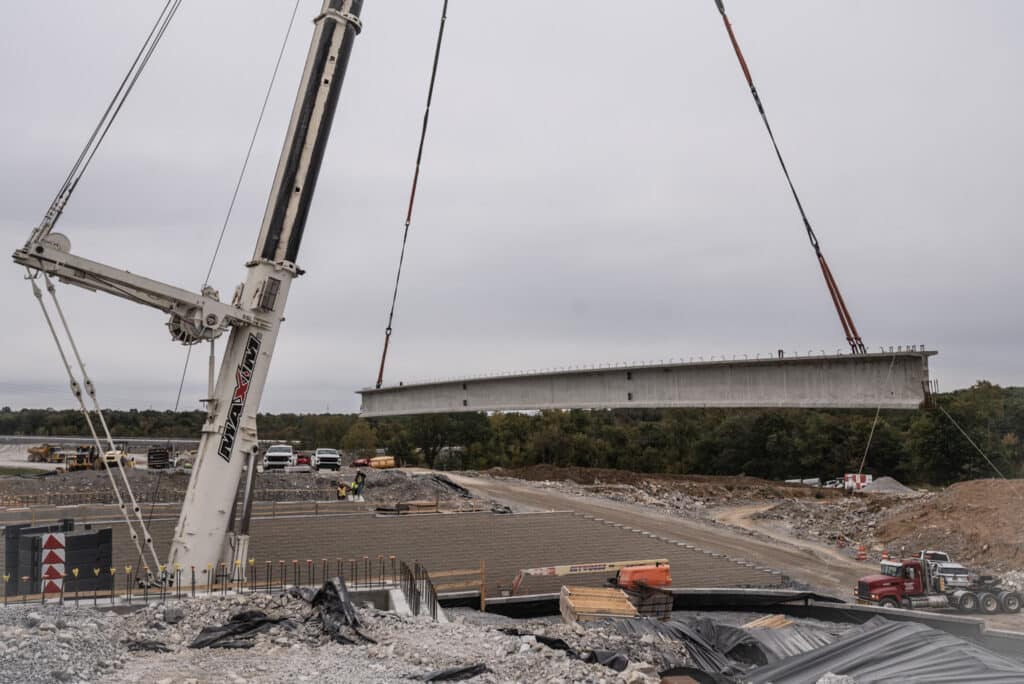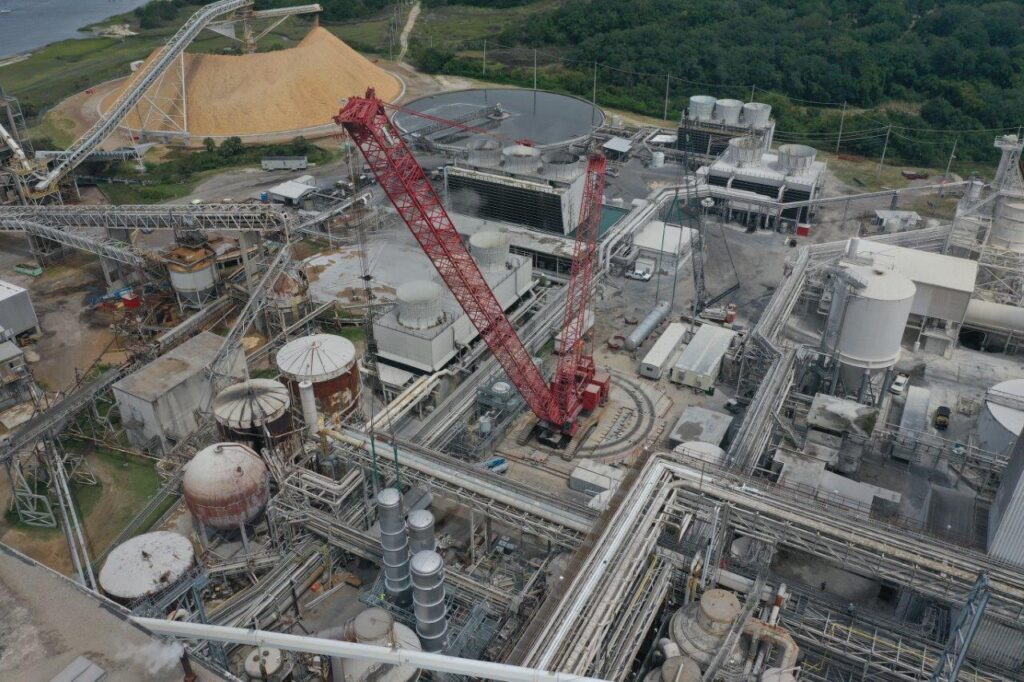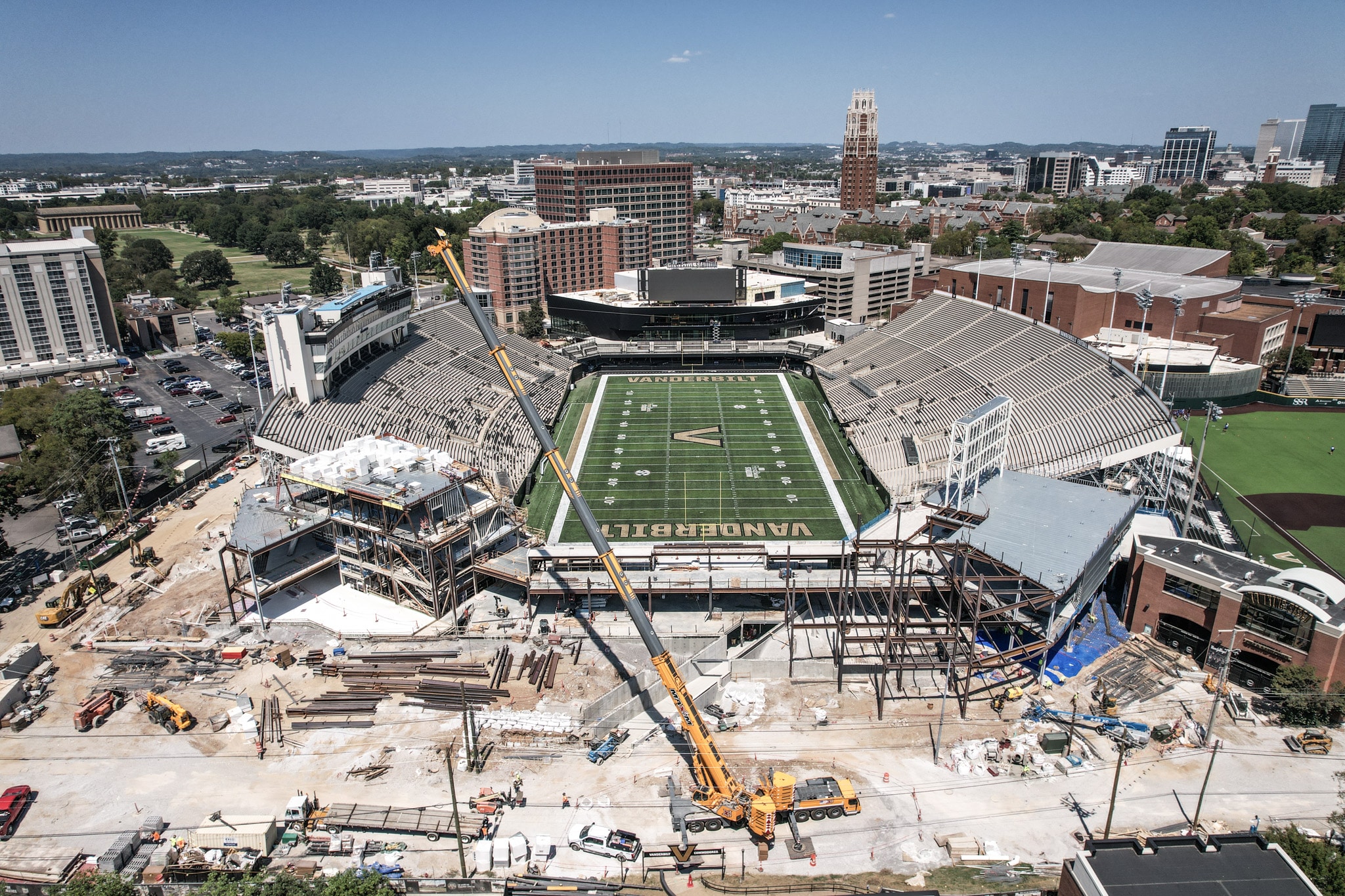Mobile cranes play a pivotal role in industries requiring precise, reliable heavy lifting. From large construction sites to industrial facilities and critical infrastructure projects, these adaptable machines transform workflows and facilitate complex tasks. Their impressive capacity to navigate diverse landscapes and tackle substantial loads makes them indispensable for a wide range of projects, supporting both large-scale and smaller endeavors.
This article explores the top three applications of mobile cranes—commercial construction, infrastructure development, and industrial operations—highlighting how their versatility and operational efficiency help address evolving project needs. Additionally, you will learn how partnering with trusted providers like Maxim Crane contributes to streamlined crane rental solutions across the U.S.
Introduction to the Adaptability of Mobile Cranes
Mobile cranes are fundamental to various industries. These machines typically feature either telescopic or lattice booms and are mounted on wheels or tracks to enable swift movement. Their hydraulic or electrical systems allow for precise extension, retraction, and rotation of the booms, while counterweights ensure stability during heavy lifting operations.
This adaptability makes mobile cranes suitable for tasks in commercial construction, infrastructure development, and industrial settings. Whether the project involves placing bulky concrete beams for a bridge, assembling high-rise steel panels, or installing large-scale equipment in a factory, mobile cranes provide capabilities that fixed machinery cannot match. Their agility, combined with versatile load capacity and efficient on-site mobility, helps ensure that projects continue advancing with minimal delays.
Another notable advantage is rapid setup. Unlike stationary systems or less versatile machines, mobile cranes can begin work soon after arriving on-site. Their maneuverability also enables them to operate in congested areas such as urban construction sites or confined industrial spaces. With numerous crane designs available for both light-duty and heavy-duty tasks, operators can address a broad range of project requirements without sacrificing efficiency.
Experienced providers like Maxim Crane supply an extensive range of equipment to meet these diverse needs. Through specialized services, engineering advice, and a large inventory of cranes, they support projects of various scopes and help businesses progress toward their operational goals.
The Role of Mobile Cranes in Commercial Construction

Commercial construction projects, including skyscrapers, office complexes, and sports arenas, require equipment that can handle massive loads while remaining adaptable as project demands evolve. Mobile cranes are often chosen for their power, flexibility, and reliable lifting capabilities.
Facilitating Large and Complex Building Elements
High-rise towers, stadiums, and mixed-use developments depend on heavy structural elements such as steel frameworks, concrete slabs, and glass panels. Mobile cranes are well-suited for handling these materials due to their substantial lift capacities and extended reach. For example, hydraulic truck cranes excel at hoisting steel beams to upper floors, while crawler cranes are effective on uneven terrains.
A key advantage is their ability to reposition efficiently around a job site. One crane may install core supports, while another places facade panels along the perimeter. This capability allows construction teams to manage multiple tasks simultaneously, reducing downtime and keeping projects closer to schedule.
Fast Deployment and Adaptable Mobility
Selecting the right crane often depends on the speed and ease of deployment. Many mobile crane models require minimal setup, making them ideal for fast-paced construction sites. In addition, their quick repositioning can help reduce interruptions in the workflow. This operational efficiency is beneficial in projects where timely adjustments are important—such as in certain highway and industrial projects—though the specific impacts may vary by project conditions. Relocating these cranes requires minimal downtime, boosting overall efficiency in scenarios with shifting on-site demands.
With the ability to navigate complex job sites, mobile cranes can switch between tasks—whether lifting preassembled roof structures or installing specialized mechanical systems—without requiring extensive disassembly or relocation procedures. This fluid capability supports continuous progress even when project requirements change rapidly.
Types of Mobile Cranes Used in Commercial Projects
Several crane models are widely employed in commercial construction, each offering unique benefits:
- All-Terrain Cranes: These cranes are designed to perform on both paved roads and rough surfaces, making them suitable for sites that require both on-road travel and off-road performance.
- Boom Trucks: Mounted on trucks, these cranes handle lighter lifts and are particularly beneficial for medium-height projects given their high maneuverability.
- Hydraulic Truck Cranes: Featuring telescopic booms and robust hydraulic systems, they are capable of managing substantial loads under various conditions, combining transport convenience with high lift capacity.
Mobile cranes provide vital support in commercial construction by accommodating a range of loads and site configurations. Their flexibility and power make them an invaluable resource for complex building projects.
Infrastructure Development Powered by Mobile Cranes

Robust infrastructure is a cornerstone of modern society, encompassing highways, bridges, and rail systems. These large-scale projects often require heavy lifting for the assembly of key structural components. By combining power with flexibility, mobile cranes help engineers manage such tasks effectively.
Tackling Challenging Projects
Infrastructure projects—such as constructing new bridges or expanding highways—demand both heavy lifting and precise assembly of elements like concrete girders and steel beams. Mobile cranes provide the capacity and control needed to handle these materials. For instance, crawler cranes, with their robust tracks, offer the stability needed to work on uneven terrain.
Mobile cranes are particularly valued in projects where the rapid repositioning of equipment can help maintain workflow momentum. In settings where project demands change quickly, such as certain industrial operations or highway segments with complex access points, the ability of mobile cranes to move efficiently may help reduce overall delays.
Managing Oversized and Specialized Components
Infrastructure projects often involve not only typical construction materials but also oversized or specialized parts such as giant pipes and prefabricated modules. The versatility of mobile cranes reduces logistical challenges by combining lifting capacity with precise, controlled movement. Their ability to reposition without extensive downtime is a key advantage in complex assemblies, though the specific benefits depend on project needs.
Choosing the Right Crane for Infrastructure Work
Different classes of mobile cranes cater to various infrastructure requirements:
- Crawler Cranes: With wide tracks for stability, these cranes are effective for major lifts on rugged or uneven terrains.
- Telescopic Cranes: Their extendable booms allow them to manage a variety of lift heights, making them suitable for multi-level tasks such as installing overpass sections.
- Truck-Mounted Cranes: These cranes, known for combining transport ease with effective lifting capacity, excel in scenarios where site accessibility is critical.
Mobile cranes support infrastructure projects by integrating a range of lifting capabilities with adaptable operation, enabling timely progress in complex projects.
Industrial Sectors and the Importance of Mobile Cranes

In industrial environments such as steel mills, automotive plants, and chemical refineries, mobile cranes are essential for the safe and efficient handling of heavy machinery and components. Their flexibility often proves critical in minimizing operational downtime.
Enhancing Upgrades and Maintenance
Industrial facilities often house complex systems like boilers, production lines, or large turbines. Shutting down operations for major repairs can severely impact productivity. Mobile cranes simplify these projects by efficiently repositioning massive equipment in tight spaces, reducing overall downtime. Their ability to quickly move from one location to another is seen as an advantage in many maintenance scenarios, although the direct impact on reducing industrial shutdown durations may vary with specific project conditions.
Facilitating Complex Machinery Installations
Some industrial operations require the installation of new systems or the expansion of existing facilities. Mobile cranes are highly effective in suspending heavy equipment modules or aligning specialized industrial units with precision, particularly in cramped or challenging layouts. Their versatility in repositioning helps ensure that installations progress with minimal interruption, supporting steady productivity.
Refinery and Processing Plant Support
In refineries and chemical plants, large components such as reactors and process towers must be installed or replaced safely and accurately. Mobile cranes assist in handling these tasks by providing controlled and powerful lifts. Their ability to reposition quickly adds flexibility to operations, though the specific cost savings or downtime reductions will depend on the individual project context.
Preferred Mobile Crane Types in Industrial Settings
Industrial managers often rely on specific mobile crane types to meet their operational needs:
- Rough Terrain Cranes: Designed with sturdy tires and stable undercarriages, these cranes are ideal for navigating uneven, unpaved areas.
- Compact Cranes: Despite their smaller size, these cranes deliver robust lifting power, making them particularly useful in congested environments.
- Telescopic Cranes: Their versatile booms support both vertical and horizontal lifts, allowing for rapid setup and efficient handling of urgent replacements or installations.
Using the appropriate mobile crane enhances the efficiency and responsiveness of industrial operations, though the measurable impact on downtime reduction should be considered within the specific context of each facility.
Why Mobile Cranes Remain Indispensable
Mobile cranes have established themselves as a backbone for numerous industries, thanks to their adaptability, dependable performance, and broad lifting capacities. Whether deployed in urban developments, highway construction, or industrial facilities, these machines enable efficient, large-scale operations while minimizing delays.
Versatility for Broad Applications
One of the primary advantages of mobile cranes is their ability to handle a variety of tasks across different environments. They can hoist large structural elements at a construction site, secure prefabricated sections for an infrastructure project, or shift bulky machinery in an industrial plant. This multifunctionality reduces the need for separate specialized equipment, streamlining operations and resource allocation.
Cost-Effective Project Management
Long-term ownership of heavy equipment carries significant costs related to maintenance, storage, and labor. Renting mobile cranes offers a financially appealing alternative, allowing project leaders to leverage advanced machinery without the burden of extensive overhead. This strategic use of resources can help keep budgets in check and projects on schedule.
Reduced Downtime Through Efficient Repositioning
The ability of mobile cranes to quickly reposition on a job site is widely recognized as a factor that can help maintain continuous work progress. In projects where time-sensitive adjustments are necessary—such as some highway or industrial operations—this efficiency may contribute to fewer interruptions. While the specific benefits will vary depending on the project, this operational advantage is a valued aspect of mobile crane performance.
Tailored Expertise
Partnering with experienced crane providers means more than simply renting machinery. Companies like Maxim Crane bring industry insights that help clients select the right equipment and develop effective heavy lifting strategies. This collaborative approach enhances project planning and overall performance.
A Crucial Asset for Modern Industry
By offering flexible equipment options and comprehensive technical support, mobile cranes continue to meet the evolving demands of today’s industries. They simplify complex tasks, reduce manual labor, and help maintain project momentum even under shifting conditions.
Practical Tips for Selecting a Mobile Crane
Choosing the right crane is critical to project success. Consider the following factors to make an informed decision:
Determine Load Capacity
Evaluate the heaviest load to be lifted and add an allowance for unexpected weight variations. Overestimating can lead to unnecessary expenses, while underestimating might delay the project if heavier materials arise unexpectedly.
Consider Terrain and On-Site Conditions
Job sites vary widely. For flat, paved surfaces, truck-mounted cranes can be effective. For projects with rough or uneven terrain, rough terrain or crawler cranes may be better suited. Understanding ground conditions and site access is key to choosing the right equipment.
Evaluate Lift Height and Horizontal Reach
For projects involving tall structures, a crane with an extendable boom is essential. Meanwhile, tasks requiring broad lateral movement may require a crane with significant horizontal reach.
Assess Mobility Requirements
Consider how frequently the crane will need to be repositioned on-site. Projects that demand frequent relocation may benefit from all-terrain or boom truck cranes, while others might prioritize stability over mobility.
Seek Expert Guidance
Consulting established providers like Maxim Crane can ensure that you select equipment that matches your unique project demands. Expert advice can help optimize crane choice relative to load, site conditions, and timeline requirements.
Plan for Future Needs
If a project is likely to expand or change in scope, choose a crane that can accommodate not only immediate needs but also potential future demands.
Working with experienced partners ensures that you have the right tools in place to support current and evolving operational objectives.
Video: https://youtu.be/H39-5e2wmHY
Embrace the Power of Mobile Cranes for Your Next Project
Mobile cranes continue to serve as a vital asset across various industries, streamlining heavy lifting and supporting continuous project progress. Whether it’s hoisting substantial steel beams in commercial construction, maneuvering large bridge components in infrastructure projects, or repositioning critical equipment in industrial facilities, mobile cranes offer a blend of flexibility, power, and efficiency.
For projects of any scale, partnering with a reputable provider like Maxim Crane can enhance your operations through access to a wide range of modern cranes and expert technical support. Ready to elevate your next project? Explore mobile crane rental services today and connect with a team that understands your unique challenges.


